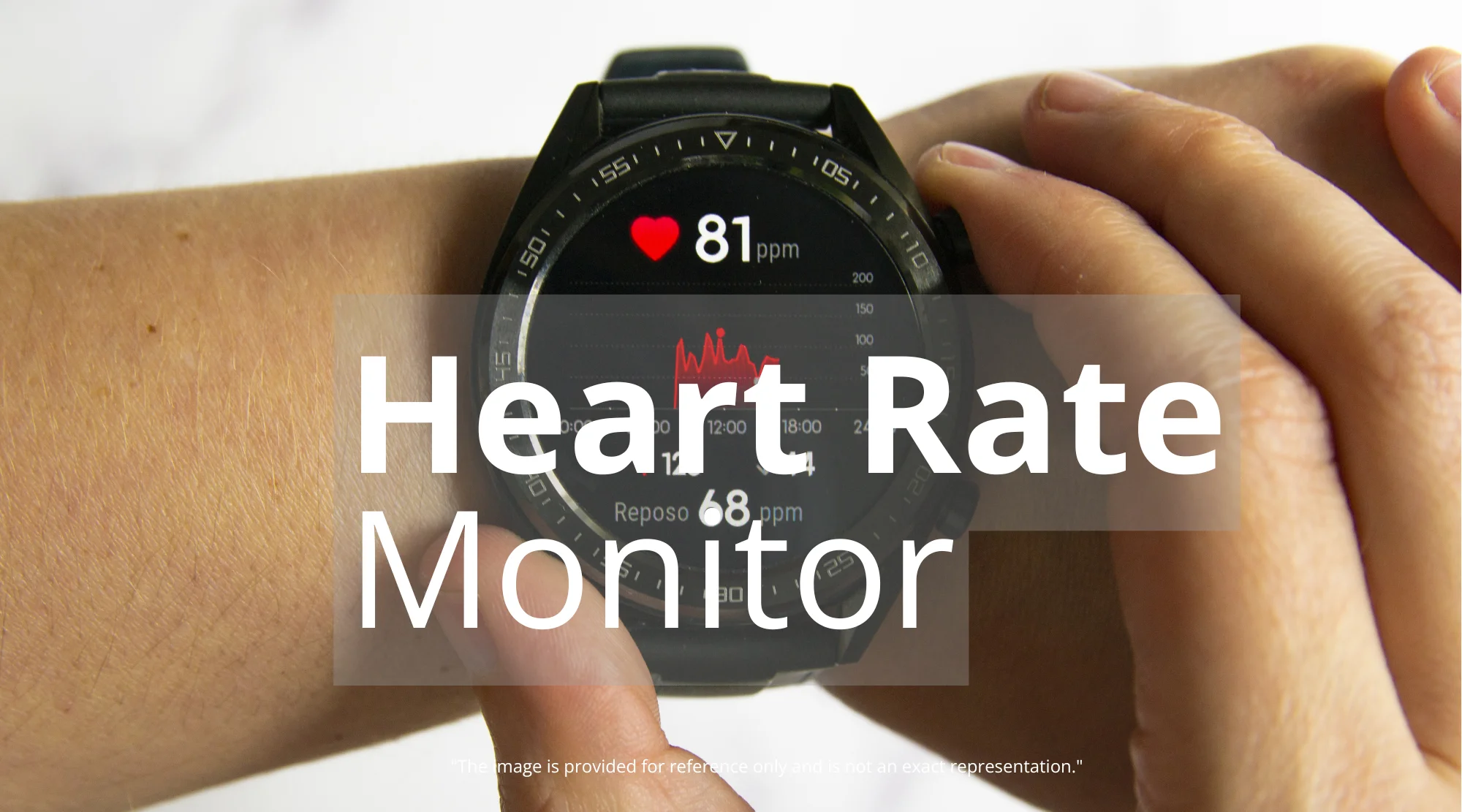Mastering Your Metrics: A Comprehensive Guide to Heart Rate Monitors
In the dynamic world of fitness, understanding your body’s signals is paramount. A heart rate monitor acts as your personal coach, providing invaluable data to optimize workouts and track progress. Whether you’re a seasoned athlete striving for peak performance or a beginner embarking on a wellness journey, a heart rate monitor offers a window into your cardiovascular system. This guide delves deep into the core functionalities, benefits, and insights provided by these essential fitness companions, helping you make informed decisions to fuel your fitness aspirations.

Deciphering the Data: Key Metrics Explained
Heart rate monitors provide a wealth of information, but understanding what each metric signifies is crucial for maximizing their value. Let’s unpack some of the most important data points:
Heart Rate Zones: The Foundation of Targeted Training
Imagine your exercise routine as a journey with distinct destinations. Heart rate zones serve as the signposts, guiding you toward specific fitness goals. These zones are based on your maximum heart rate (MHR), typically divided into five categories, each representing a different intensity level.
- Zone 1 (Very Light): 50-60% of MHR – Ideal for warm-ups, cool-downs, and recovery days.
- Zone 2 (Light): 60-70% of MHR – Excellent for building endurance, often utilized in “80/20 training” where the majority of your workouts are performed at this level.
- Zone 3 (Moderate): 70-80% of MHR – A good zone for improving cardiovascular fitness and burning calories.
- Zone 4 (Hard): 80-90% of MHR – Suitable for interval training and pushing your limits.
- Zone 5 (Maximum): 90-100% of MHR – Reserved for short bursts of extreme effort, often used in high-intensity interval training (HIIT).
Understanding and utilizing heart rate zones ensures you’re training effectively, preventing overtraining, and achieving your desired results. You can read more about the benefits of HIIT and how it can benefit your fitness journey in our article on Sprint Training: Unleash Peak Fitness in Minutes for a Healthier You.
Maximum Heart Rate (MHR): Setting the Ceiling
Your MHR represents the highest your heart can beat during strenuous exercise. While it’s not a perfect metric, knowing your MHR is essential for setting heart rate zones. A common method for estimating MHR is subtracting your age from 220, although this is a general estimation. However, some heart rate monitors can help you with this. The more accurate your MHR, the more personalized and effective your training can be.
VO2 Max: Measuring Your Aerobic Capacity
VO2 max, or maximal oxygen uptake, indicates the maximum amount of oxygen your body can utilize during exercise. It’s a key measure of cardiovascular fitness and endurance. A higher VO2 max suggests a greater ability to sustain intense effort for longer periods. While laboratory tests are the gold standard for measuring VO2 max, many heart rate monitors employ algorithms to provide estimates. Tracking your VO2 max over time offers a valuable insight into your fitness progress and helps you understand how your body adapts to training. This is one of the features included in Garmin Metrics Decoded: Master Your Fitness with Training Status, VO2 Max & More.
Heart Rate Variability (HRV): A Window into Your Body’s Stress Response
HRV measures the variations in time between your heartbeats, measured in milliseconds. High HRV is generally associated with better cardiovascular health and indicates that your body is adapting well to stress and recovery. Conversely, low HRV may signify stress, fatigue, or overtraining. Factors such as age, fitness level, and lifestyle influence HRV readings. Monitoring HRV can provide insights into your overall well-being and help you make informed decisions about your training and recovery.
Resting Heart Rate (RHR): A Gauge of Cardiovascular Fitness
Your RHR is the number of times your heart beats per minute when you are at rest. This provides an important indication of your current cardiovascular fitness. Generally, a lower RHR indicates a healthier heart and better cardiovascular fitness because the heart is working more efficiently. This is often associated with athletes. However, if your RHR is unusually high or low, this may indicate underlying health issues, so you should consult with a medical professional. Monitoring your RHR over time can provide a simple yet effective method for tracking your progress and identifying potential health concerns.
Calories Burned: Quantifying Your Efforts
Heart rate monitors use algorithms to estimate the number of calories you burn during a workout. This estimation is based on your heart rate and individual characteristics. While the accuracy of calorie estimations can vary, they provide a useful guide for monitoring your energy expenditure and supporting your weight management goals. Combining this data with other metrics provides a comprehensive view of your workout’s impact.
Choosing the Right Heart Rate Monitor: A Buyer’s Guide
The market offers a diverse range of heart rate monitors, each with its own features and benefits. Understanding your needs and preferences is crucial for selecting the right one.
- Chest Strap Monitors: These monitors provide the most accurate heart rate readings because they sit directly against your chest. They are known for their reliability, making them ideal for serious athletes and those who prioritize precision.
- Wrist-Based Monitors: These monitors use optical sensors to measure heart rate through your wrist. They are convenient and easy to wear, suitable for various activities, from running to swimming.
- Smartwatches with Heart Rate Tracking: These advanced devices combine fitness tracking with smartwatch functionalities. They offer a wide range of features, including heart rate monitoring, activity tracking, sleep analysis, and smartphone notifications.
- Consider Your Activities: If you’re a swimmer, ensure the monitor is waterproof. For runners, GPS functionality might be crucial.
- Battery Life: Consider how long the battery lasts.
- Features: Some monitors offer more advanced features like GPS, VO2 Max tracking, and HRV analysis.
- Budget: Heart rate monitor prices vary significantly. Determine how much you’re willing to spend.
Beyond the Basics: Maximizing Your Heart Rate Monitor’s Potential
To get the most out of your heart rate monitor, consider these advanced strategies:
- Consistency is Key: Wear your monitor during every workout for consistent and accurate data.
- Track Trends: Don’t focus on a single reading; analyze the trends over time. Note improvements in RHR, VO2 max, and HRV.
- Personalize Your Training: Utilize heart rate zones to structure your workouts, tailoring them to your fitness goals.
- Listen to Your Body: Pay attention to how you feel. A heart rate monitor provides data, but your body’s signals are also important.
- Sync with Apps: Most heart rate monitors sync with apps or online platforms, allowing you to track progress, analyze data, and share your achievements.
The Benefits Beyond Fitness: Heart Rate Monitors and Overall Wellness
Heart rate monitors extend beyond just improving physical fitness; they can also contribute to overall wellness. They can help in the following ways:
- Stress Management: By monitoring HRV, you can understand how stress affects your body and take proactive steps to mitigate it. Try some of the stress management techniques outlined in our article on Hydration & Stress: The Surprising Link That Can Change Your Life.
- Sleep Optimization: By monitoring your heart rate during sleep, you can gain insights into your sleep quality and identify potential sleep disorders.
- Early Detection of Health Issues: Unusually high or low resting heart rates can signal potential health concerns, prompting you to seek medical attention.
- Motivation and Goal Setting: Seeing data-driven progress can be incredibly motivating, helping you stay committed to your fitness goals.
Conclusion: Embracing the Power of Your Heart Rate
A heart rate monitor is more than just a gadget; it’s a powerful tool that empowers you to take control of your fitness and well-being. By understanding the core metrics, choosing the right device, and utilizing the advanced strategies outlined above, you can unlock its full potential. Embrace the data, listen to your body, and embark on a journey towards a healthier, more informed you. Remember to prioritize your well-being by eating healthy, a balanced diet, as detailed in our article, Healthy Eating: Your Ultimate Weekly Meal Plan for a Balanced Life.












Post Comment